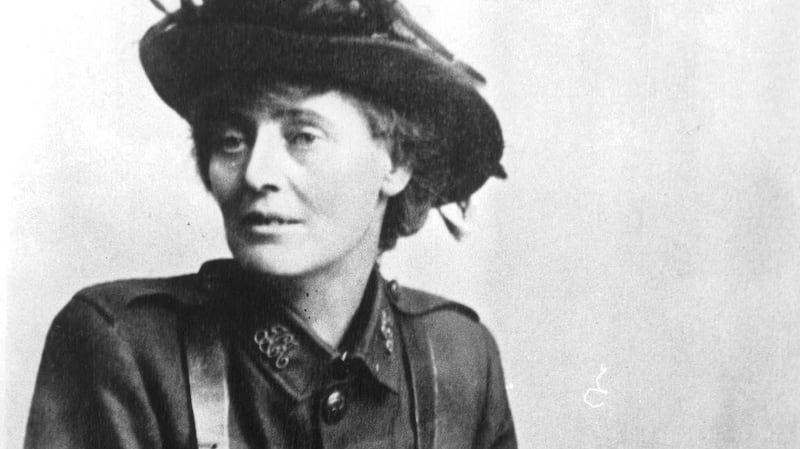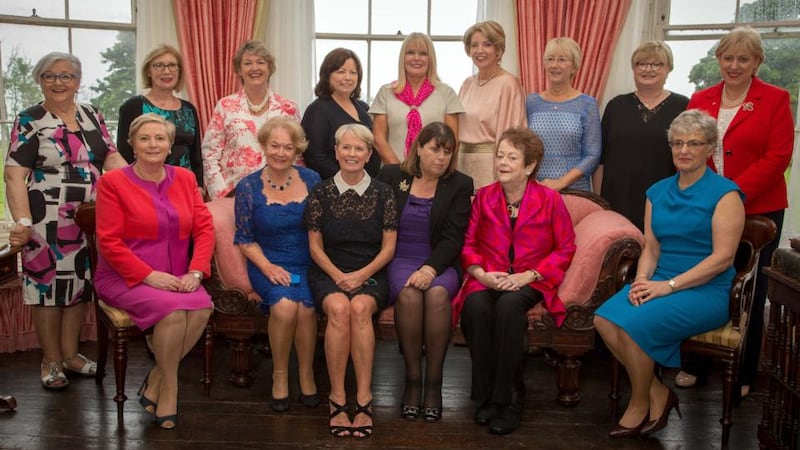There is a story, recounted by Irish Times Parliamentary Correspondent Michael O'Regan in his foreword to Owen O'Shea's 2011 book Heirs to the Kingdom: Kerry's Political Dynasties, about the funeral of a TD who died unexpectedly decades ago. As the TD's bereaved widow and children walked behind the coffin along with senior party figures and a cabinet minister, a local party activist asked a neighbouring TD about selecting a candidate for the upcoming byelection. "Put up the widow," the TD is reported to have replied loudly enough for the minister to hear.
The “widow’s mandate” was the route through which most women TDs were selected and elected in the early decades of the State. Only seven women TDs sat in Dáil Éireann from the 1930s to the early 1950s. Five were widows of deceased male TDs and another’s name, Margaret Mary Pearse, says all you need to know about her family (her mother, Margaret Pearse, also served a TD for Sinn Féin between 1921 and 1922). The profile of women TDs began to diversify from the mid-1950s onwards, but familial connections to male politicians remained important for women in the candidate-selection process. Of the 11 new women TDs elected between the 1954 and 1977 general elections, six were widows and three were daughters of TDs. The widow’s succession was most common in rural Fianna Fáil constituencies; however a number of Fine Gael women TDs and Eileen Desmond of the Labour Party (who served as a cabinet minister) also entered political office after the death of their spouse.

Spouse’s death
Pensions for widows and children of deceased TDs were not introduced until 1968. This may partially explain why the widow’s seat phenomenon died out in the 1970s – for some women, there was a financial imperative in running as their spouse’s death had left them with no income. Irish society did not stigmatise widows who worked outside the home to support a family in the way as it did other mothers.
Pensions for widows and children of deceased TDs were not introduced until 1968
These female TDs tend to be negatively contrasted with other generations of women politicians, for example the radical republican women in the 1920s and the feminist parliamentarians in the 1970s and 1980s. One commentator writing in 1979 described widows (and daughters) as “another almost wholly destructive aspect of Irish politics”. This view is worthy of reappraisal.
There are well-rehearsed arguments against and for political dynasties, but dynasties have not just been a recruitment channel for women TDs. Many male TDs have also succeeded a close male relative (though none as of yet have followed their spouse into Leinster House) including taoisigh and tánaistí, although a higher proportion of women overall have. This is reflective of a political and cultural system that was highly hostile to women’s participation in the public sphere – at least beyond women’s supportive functions as local party members. It is telling that over three-quarters of women TDs elected between 1932 and 1977 needed male connections to enter politics. They signed up to election campaigns at a time when they and their young families were grieving. Some widows faced opposition in the candidate-selection process, including Celia Lynch and Mary Bridget Ryan (their voters had no such qualms), while Eileen Lemass was not elected in the 1976 byelection in Dublin South West to replace her late husband (she won a seat in the next general election in the newly redrawn Dublin Ballyfermot constituency).
They gave voice to the concerns of housewives and mothers across the country, such as the price of goods and services
Concerns of housewives
The Dáil widows generally did not raise issues that we would categorise as feminist (and parliamentary culture would not have allowed them to so do, even if they wanted to), but the parliamentary record shows that a number of them did raise everyday women’s issues on the floor of the Dáil. They gave voice to the concerns of housewives and mothers across the country, such as the price of goods and services. Most of these women focused on constituency-related matters as opposed to national issues – but so did male TDs. As a result, most women had impressive results at the polls and long political careers. They provided a service that was expected of them by constituents. In North Tipperary, it is said that the local mantra was to “go to Mary Bridget” [Ryan] with any issues.

They may not carry the same levels of public interest as Constance Markievicz and her like but, as we come to the end of this centenary year for women’s suffrage, we should also remember women TDs such as Mary Reynolds and Bridget Mary Rice for carving out a space for themselves in a highly male-dominated system and in the most challenging of personal circumstances.
Claire McGing is based in the Social Sciences Institute of the department of geography, Maynooth University









